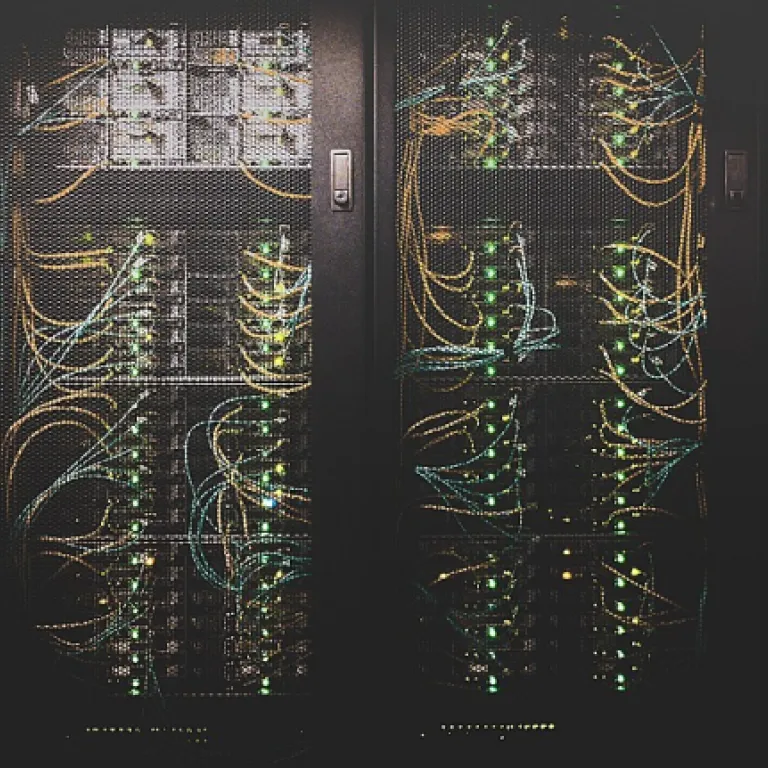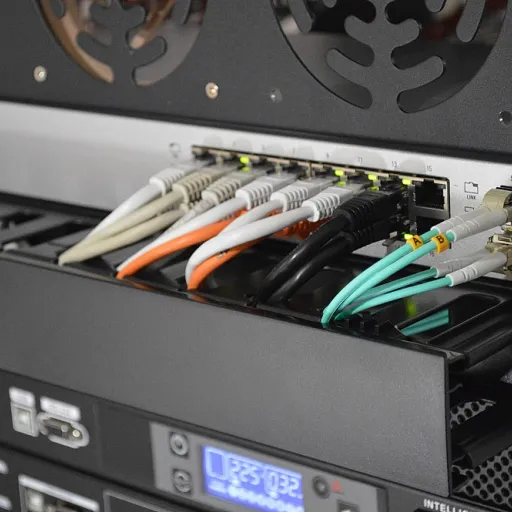
The Role of Power Automate Connectors in Modern Software
The Backbone of Modern Automation
In today's rapidly evolving digital landscape, Power Automate connectors have emerged as a crucial component in the realm of software automation. These connectors serve as the backbone of the Power Platform, enabling seamless integration across a myriad of applications and services. Whether it's Microsoft Teams, SharePoint, or Azure, connectors power the automation of tasks, allowing businesses to streamline operations and enhance productivity.
Connecting the Dots
Connectors act as bridges between different software applications, facilitating the flow of data and actions across platforms. This capability is particularly vital for businesses that rely on diverse applications like Excel Online, Azure DevOps, and SharePoint Connector. By leveraging these connectors, organizations can automate repetitive tasks, reduce manual errors, and focus on strategic initiatives.
Standard vs. Custom Connectors
While standard connectors offer a wide range of pre-built integrations, the need for custom connectors is growing. Custom connectors allow businesses to tailor integrations to their specific needs, providing flexibility and control over their automation processes. Independent publishers and developers can create these custom solutions, ensuring that even niche applications can be integrated into the broader ecosystem.
Empowering Business Applications
With the rise of low-code/no-code solutions, as explored in the rise of AWS low-code/no-code solutions, Power Automate connectors empower users to build powerful business applications without extensive coding knowledge. This democratization of technology enables more individuals within an organization to participate in digital transformation efforts, fostering innovation and agility.
Technological Advancements Shaping Connectors
Technological Innovations Driving Connector Evolution
The landscape of Power Automate connectors is rapidly evolving, driven by technological advancements that are reshaping how businesses integrate and automate their processes. These connectors serve as the backbone of the Power Platform, enabling seamless interaction between various applications and services. As technology progresses, several key innovations are influencing the development and functionality of these connectors.
Cloud Integration and Scalability
One of the most significant advancements is the integration of cloud technologies. With platforms like Azure and SharePoint, connectors are now more scalable and flexible, allowing businesses to manage data and processes across multiple environments. This cloud-based approach not only enhances the performance of Power Automate but also ensures that businesses can scale their operations efficiently.
Custom and Independent Publisher Connectors
The rise of custom connectors and independent publisher connectors has also been a game-changer. These allow organizations to create tailored solutions that meet specific business needs, offering a level of customization that standard connectors may not provide. By leveraging these custom solutions, businesses can integrate niche applications and third-party services into their workflows, enhancing overall productivity.
Enhanced Data Handling and Security
With the increasing importance of data in business operations, connectors are being designed to handle large volumes of data more efficiently. This includes improved data security measures, ensuring that sensitive information is protected as it moves between systems. The integration of advanced security protocols within connectors helps businesses maintain compliance with industry standards and regulations.
For more insights on how these technological advancements are transforming business challenges into opportunities, explore our detailed analysis on unlocking the potential of automated enterprise solutions.
Integration Challenges and Solutions
Overcoming Integration Obstacles
As businesses increasingly rely on Power Automate connectors to streamline operations, they encounter a variety of integration challenges. These challenges often arise from the need to connect disparate systems, each with its own protocols and data formats. The diversity of platform connectors available in the Power Platform ecosystem, including custom connectors and third-party services, can sometimes complicate integration efforts.
One common issue is the compatibility between standard connectors and legacy systems. While Microsoft Power provides a robust set of tools, older systems may not seamlessly integrate with modern cloud applications like Azure or SharePoint. This necessitates the creation of custom connectors to bridge the gap, allowing data to flow smoothly between systems.
Strategies for Seamless Integration
To tackle these challenges, businesses can adopt several strategies:
- Utilize Independent Publisher Connectors: These connectors, developed by the community, can offer unique solutions tailored to specific needs, enhancing the capabilities of the Power Platform.
- Leverage Microsoft Learn: By engaging with resources and training available on Microsoft Learn, teams can better understand how to implement and optimize automate connectors.
- Implement Data Standardization: Ensuring that data is consistent across platforms can reduce integration friction. This involves using tools like Excel Online for data manipulation and Azure DevOps for project management.
By addressing these integration challenges head-on, businesses can unlock the full potential of Power Automate and drive efficiency across their operations. As we explore the evolution of systems domain names, it's clear that overcoming these obstacles is crucial for future success.
The Impact of AI and Machine Learning on Connectors
The Influence of AI and Machine Learning on Connector Development
Artificial Intelligence (AI) and Machine Learning (ML) are revolutionizing the way we approach automation and integration within the Power Platform. As businesses increasingly rely on data-driven insights, the integration of AI and ML into Power Automate connectors is becoming indispensable. These technologies enhance the capabilities of connectors by enabling more intelligent data processing and decision-making.
AI-powered connectors can analyze vast amounts of data from various sources, such as SharePoint, Azure, and Microsoft Teams, to identify patterns and trends. This analysis allows for more efficient automation of business processes, reducing the need for manual intervention. For instance, AI can help in predicting potential issues in workflows, allowing businesses to proactively address them before they escalate.
Machine Learning models, when integrated with connectors, can offer predictive analytics that empower organizations to make informed decisions. For example, by leveraging ML algorithms, a custom connector can predict customer behavior patterns, enabling businesses to tailor their services accordingly. This capability is particularly beneficial in applications like Dynamics 365, where customer engagement is crucial.
Moreover, the use of AI and ML in connectors facilitates the creation of more personalized and adaptive workflows. As these technologies continue to evolve, we can expect connectors to become even more sophisticated, offering enhanced automation capabilities that cater to the unique needs of each business.
In summary, the integration of AI and ML into Power Automate connectors is not just a trend but a necessity for businesses aiming to stay competitive in a rapidly changing digital landscape. As we look to the future, the role of these technologies in shaping the evolution of connectors will only grow, driving innovation and efficiency across various platforms and applications.
Future Trends in Automation and Integration
Emerging Trends in Automation and Integration
As we look to the future of software, particularly in the realm of automation and integration, several key trends are emerging that promise to reshape how businesses leverage technology. Power Automate connectors are at the forefront of this transformation, enabling seamless integration across various platforms and services.
One significant trend is the increasing reliance on cloud-based solutions. As more organizations migrate to the cloud, the demand for connectors that can integrate with cloud services like Azure and SharePoint is growing. This shift not only enhances scalability but also improves data accessibility and collaboration across teams.
Another trend is the rise of custom connectors. Businesses are increasingly seeking tailored solutions that meet their specific needs. Custom connectors allow organizations to create unique integrations that align with their workflows, providing a competitive edge in a rapidly evolving market.
The role of independent publishers is also expanding. These third-party developers are creating innovative connectors that extend the capabilities of platforms like Microsoft Power Automate. By offering specialized solutions, independent publishers are helping businesses automate complex processes and streamline operations.
Furthermore, the integration of AI and machine learning into connectors is revolutionizing how data is processed and analyzed. These technologies enable more intelligent automation, allowing businesses to make data-driven decisions with greater accuracy and speed.
Finally, the emphasis on interoperability is driving the development of connectors that can seamlessly interact with a wide range of applications and services. This trend is particularly important as businesses continue to adopt diverse tools and platforms to meet their operational needs.
In conclusion, the future of automation and integration is bright, with Power Automate connectors playing a pivotal role in enabling businesses to harness the full potential of their digital ecosystems. By staying abreast of these trends, organizations can position themselves for success in an increasingly connected world.
Preparing for the Future: Skills and Tools
Equipping Yourself for the Automation Era
As the landscape of software continues to evolve, particularly with the rise of Power Automate connectors, preparing for the future involves both skill development and tool mastery. The integration of automation into business applications is not just a trend but a necessity for staying competitive.
Essential Skills for Navigating the Future
- Understanding of Cloud Platforms: Familiarity with platforms like Microsoft Azure and the Power Platform is crucial. These platforms are the backbone of many automation solutions, providing the infrastructure for creating and deploying connectors.
- Proficiency in Data Management: With connectors facilitating data flow between services like SharePoint, Excel Online, and Microsoft Teams, understanding data management and integration is vital.
- Knowledge of AI and Machine Learning: As discussed earlier, AI and machine learning are increasingly influencing connector development. Skills in these areas can enhance your ability to create intelligent, responsive automation solutions.
- Custom Connector Development: While standard connectors are widely used, the ability to develop custom connectors allows for tailored solutions that meet specific business needs.
Tools to Master for Effective Automation
- Microsoft Power Automate: This tool is central to creating automated workflows and integrating various services. Mastery of Power Automate is essential for leveraging its full potential.
- Azure DevOps: For those involved in development, Azure DevOps offers tools for managing projects and deploying applications, ensuring seamless integration with automation processes.
- Microsoft Learn: Utilizing resources like Microsoft Learn can provide up-to-date training and insights into new features and best practices for using Power Automate and other Microsoft services.
Staying Ahead in a Dynamic Environment
As automation and integration technologies continue to advance, staying informed and adaptable is key. Engaging with communities of independent publishers and developers can provide insights into emerging trends and innovative uses of connectors. By continuously updating your skills and knowledge, you can effectively harness the power of automation to drive business success.















